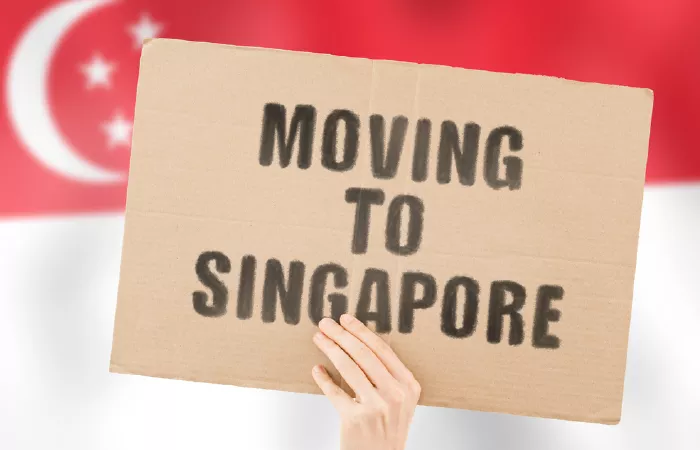Singapore’s immigration policy is a multifaceted framework designed to manage the influx of foreigners into the country while balancing the needs of its economy, society, and security. As one of the world’s leading financial hubs and a global melting pot of cultures, Singapore’s approach to immigration is strategic, dynamic, and continually evolving. In this article, we delve into the key aspects of Singapore’s immigration policy, exploring its objectives, principles, and implementation strategies.
Historical Context
Singapore’s immigration policy has been shaped by its historical, socio-economic, and geopolitical circumstances. As a former British colony and a strategic trading post, Singapore has always been a magnet for migrants seeking economic opportunities. Since gaining independence in 1965, the city-state has implemented various immigration policies to address its changing demographic and economic landscape.
Objectives of Singapore’s Immigration Policy
Singapore’s immigration policy aims to achieve several key objectives:
1. Economic Growth: Attracting skilled talent and foreign investments to drive economic growth and innovation.
2. Social Cohesion: Fostering harmony and integration among the diverse communities residing in Singapore.
3. National Security: Safeguarding the nation’s security interests by controlling the inflow of undesirable elements.
4. Population Management: Balancing population growth and maintaining demographic stability.
5. Global Talent Hub: Positioning Singapore as a global talent hub by attracting and retaining top talent from around the world.
Key Principles
Singapore’s immigration policy is guided by the following principles:
1. Meritocracy: Prioritizing individuals with skills, qualifications, and experience that contribute to Singapore’s economy and society.
2. Fairness and Equality: Ensuring fairness and equal opportunities for all residents, regardless of nationality or background.
3. Integration and Assimilation: Encouraging immigrants to integrate into Singaporean society while preserving their cultural identities.
4. Selective Immigration: Adopting a selective approach to immigration to meet the country’s specific needs and priorities.
5. Adaptability: Remaining flexible and responsive to changing economic, social, and geopolitical dynamics.
Key Components of Singapore’s Immigration Policy
1. Work Passes and Permits: Singapore offers various work passes and permits to attract foreign talent across different industries and skill levels. These include the Employment Pass (EP) for professionals, the S Pass for mid-skilled workers, and the Work Permit for semi-skilled and unskilled workers.
2. Permanent Residence (PR): Foreigners who wish to settle in Singapore permanently can apply for PR status, which grants them long-term residency rights, including access to healthcare, education, and housing benefits.
3. Citizenship: Singaporean citizenship is attainable through birth, descent, or naturalization. The government encourages eligible PRs to integrate into society and eventually apply for citizenship if they wish to do so.
4. Family Reunification: Singapore allows citizens and PRs to sponsor their immediate family members for long-term stay through various schemes such as the Dependant’s Pass and Long-Term Visit Pass.
5. Foreign Worker Quotas and Levies: To manage the inflow of foreign workers and maintain a balanced workforce, Singapore imposes quotas and levies on companies hiring foreign employees in certain industries.
6. Global Investor Program (GIP): The GIP is a scheme designed to attract high-net-worth individuals and investors to Singapore by offering them PR status in exchange for substantial investments in the country’s economy.
Challenges and Controversies
Despite its strategic approach, Singapore’s immigration policy is not without its challenges and controversies. Some of the key issues include:
1. Pressure on Infrastructure: Rapid population growth due to immigration can strain Singapore’s infrastructure, leading to issues such as housing shortages, traffic congestion, and overcrowding in public services.
2. Social Integration: Ensuring the smooth integration of immigrants into Singaporean society while preserving national identity and social cohesion remains a constant challenge.
3. Competition for Jobs: Concerns about foreign competition for jobs and depressed wages among local workers have fueled debates about the impact of immigration on the labor market.
4. Xenophobia and Discrimination: Like many countries, Singapore grapples with xenophobic sentiments and discrimination against immigrants, particularly in times of economic uncertainty or social tension.
Future Outlook
As Singapore continues to position itself as a global city and regional hub, its immigration policy will play a crucial role in shaping its future trajectory. Moving forward, the government is likely to focus on:
1. Talent Attraction and Retention: Strengthening efforts to attract and retain top talent in key growth sectors such as technology, finance, and healthcare.
2. Skills Development: Investing in education and skills training to upskill the local workforce and reduce dependence on foreign labor.
3. Diversification of Migration Channels: Exploring new avenues for migration, such as talent mobility programs and bilateral agreements with other countries.
4. Enhanced Integration Programs: Introducing initiatives to promote social integration and cultural exchange among immigrants and the local population.
Conclusion
In conclusion, Singapore’s immigration policy reflects its aspirations for economic competitiveness, social harmony, and national security. By adhering to the principles of meritocracy, fairness, and adaptability, Singapore strives to maintain a dynamic and inclusive society while harnessing the benefits of global talent and diversity. As the country navigates the opportunities and challenges of the 21st century, its immigration policy will continue to evolve in response to changing realities and aspirations.


